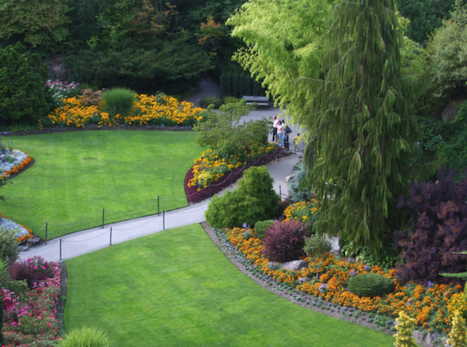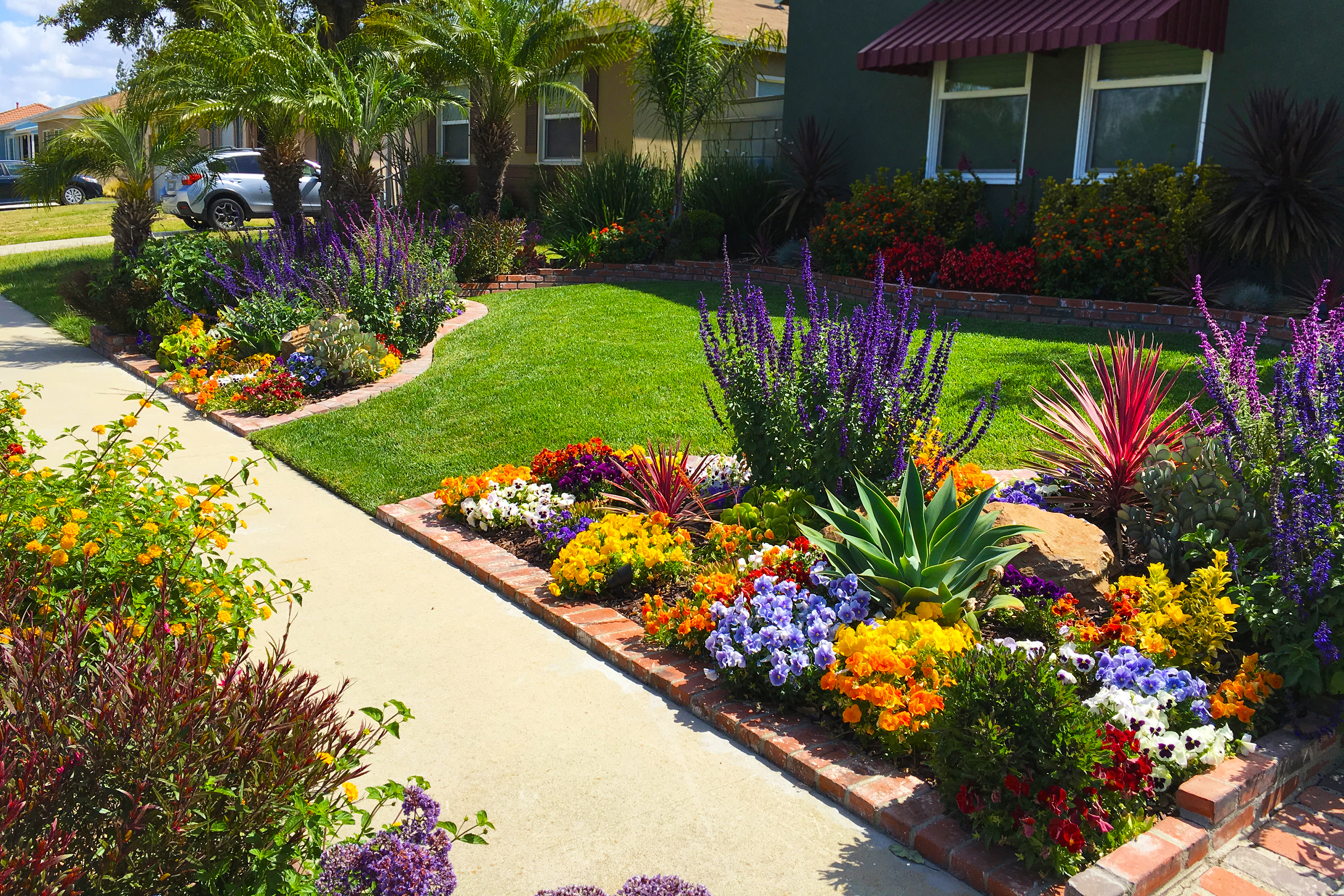Finest Landscaping Companies Jacksonville: Comprehensive Landscaping Solutions
Finest Landscaping Companies Jacksonville: Comprehensive Landscaping Solutions
Blog Article
Elevate Your Residential or commercial property's Visual With Lasting Landscape Design Layouts and Eco-Friendly Practices

Benefits of Lasting Landscaping
Implementing lasting landscaping methods not just preserves natural deposits however additionally advertises biodiversity and enhances general environmental health and wellness. By picking environmentally friendly landscape design methods, homeowner can enjoy a wide variety of advantages that extend past just visual charm. One substantial benefit is the reduction of water consumption through making use of drought-resistant plants, rain yards, and efficient irrigation systems. This not only lowers utility bills but also adds to water conservation initiatives in the area.
Moreover, lasting landscape design can improve dirt wellness by lessening making use of chemical plant foods and pesticides, thereby producing a healthier environment for plant development and beneficial dirt organisms. This, in turn, boosts the total durability of the landscape to stand up to ecological stress factors and environment adjustment impacts - landscaping company Jacksonville. In addition, lasting landscaping practices can draw in varied wild animals, consisting of pollinators like butterflies and , fostering a much more well balanced and vivid environment within the property
Incorporating Native Plants
To build on the benefits of lasting landscaping, a tactical concentrate on incorporating indigenous plants can further improve ecological resilience and promote biodiversity within the landscape. Native plants are types that naturally happen in a specific location and have developed to thrive in the local environment, soil conditions, and ecosystem. By consisting of native plants in landscaping designs, homeowner can reduce water use, reduce the requirement for chemical pesticides and fertilizers, and support the local wild animals populace.
Incorporating indigenous plants likewise helps in maintaining the one-of-a-kind personality and identification of a region's vegetation. These plants frequently require less maintenance once developed, making them a lasting and cost-efficient landscaping solution in the long run. Additionally, native plants can draw in indigenous pollinators like and butterflies, adding to the general health of the ecosystem.
When choosing indigenous plants for landscaping projects, it is necessary to pick varieties that are appropriate to the details ecological problems of the site. Consulting with local nurseries or organic gardens can give important guidance on selecting the ideal indigenous plants for a particular location. By integrating indigenous plants right into landscaping layouts, property owners can create stunning, sustainable outside areas that profit both the setting and the community.

Water Preservation Strategies
Efficient watering techniques play an essential role in lasting landscaping methods, ensuring optimal water conservation efforts in outdoor rooms. Implementing techniques such as drip watering, rain harvesting, and wise irrigation systems can significantly reduce water waste while maintaining a healthy landscape. Trickle irrigation delivers water directly to the roots of plants, lessening dissipation and overflow. Rain harvesting involves collecting rainwater from roof coverings and saving it for later use in irrigation, lowering the reliance on community water resources. Smart irrigation systems utilize weather condition data and soil wetness degrees to readjust watering schedules, avoiding overwatering and promoting water efficiency.
Along with sophisticated watering techniques, xeriscaping is another water-saving landscape design strategy that focuses on using drought-resistant plants, compost, and efficient watering to develop a low-water landscape layout - landscaping companies Jacksonville. By choosing native plants that are well-suited to the local environment and soil conditions, residential or commercial property owners can reduce the demand for excessive watering, eventually preserving water and promoting a sustainable outdoor environment
Eco-Friendly Hardscaping Ideas
Enhancing outdoor rooms with environmentally friendly hardscaping features can contribute substantially to lasting landscape design practices. Decide for materials like reclaimed timber, recycled concrete, or all-natural stone to decrease ecological effect when taking into consideration hardscaping components. These products not only add an one-of-a-kind aesthetic appeal to your outside room but also here are the findings minimize the need for brand-new resources extraction.
Carrying out absorptive paving choices such as crushed rock or absorptive concrete can help in reducing water runoff and promote groundwater recharge. These options permit rainwater to seep into the ground, avoiding erosion and reducing the worry on stormwater systems.
Incorporating indigenous plants right into hardscaping layouts can additionally improve eco-friendliness by supporting local wild animals and minimizing the requirement for excessive watering or chemical therapies. By including green wall surfaces or upright gardens, you can present much more plant life into city settings, improving air top quality and biodiversity.
Integrating energy-efficient illumination, such as solar-powered LEDs, right into hardscaping styles can minimize electrical power consumption and reduced your residential property's carbon impact. Focusing on environmentally friendly hardscaping concepts not only boosts the appeal of your outside room however additionally shows a dedication to ecological stewardship.
Upkeep Tips for Sustainable Landscapes

Frequently prune plants to promote healthy growth and protect against overgrowth that can lead to pest invasions or illness. Usage organic fertilizers to nourish pop over to these guys the soil and plants without harmful chemicals that can leach into the environment.
Conclusion
To conclude, lasting landscape design methods use many benefits for residential property owners, from boosting the visual allure of the environments to advertising environmental conservation. By integrating indigenous plants, carrying out water conservation techniques, and using environment-friendly hardscaping ideas, residential or commercial property proprietors can produce lovely landscapes that are likewise ecologically liable. With correct upkeep, lasting see landscapes can prosper and add to a much healthier ecosystem for both humans and wildlife.
Moreover, lasting landscape design can improve soil wellness by reducing the usage of chemical plant foods and chemicals, therefore producing a healthier atmosphere for plant development and helpful dirt microorganisms.To construct upon the advantages of lasting landscaping, a strategic emphasis on integrating native plants can even more enhance environmental strength and promote biodiversity within the landscape. By consisting of native plants in landscaping layouts, building owners can minimize water usage, decrease the demand for chemical pesticides and fertilizers, and sustain the neighborhood wildlife populace.
These plants frequently need much less upkeep once established, making them a affordable and sustainable landscaping remedy in the lengthy run. By integrating native plants right into landscape design layouts, residential property owners can create gorgeous, sustainable exterior spaces that benefit both the area and the environment.
Report this page